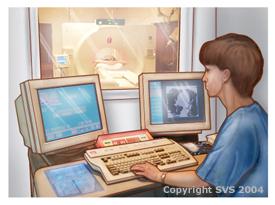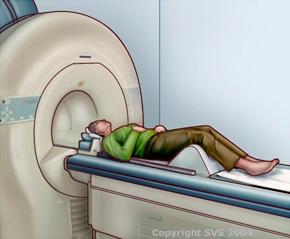Computed Tomography Angiography (CTA) and Magnetic Resonance Angiography (MRA) tests are non-invasive, advanced imaging studies that provide detailed information about the blood vessels within our bodies and their anatomic relationships with other organs. These tests use modern computerized image processing techniques that let your vascular surgeon view vascular disease in three dimensions—an important step in assessing the extent of the disease and how best to treat it.

How Are CTA and MRA Tests Similar?
- Each requires an examination while you lie on a motorized bed that is wheeled into a gantry where scanner detectors are stationed in a circular fashion.
- Each may require administration of an intravenous (IV) contrast agent that lets your vascular surgeon better visualize certain blood vessels.
How Are They Different?
There are more differences between CTA and MRA than there are similarities. For example:
- The contrast agent used in CTA is different than MRA, and they each carry their own risks. An MRA may not require any contrast at all.
- CTAs require just a few minutes to complete; MRAs may require 20-30 minutes.
- CTAs involve exposure to radiation (see below), MRAs do not.

Which is right for you?
Your vascular surgeon decides which imaging study to perform based on a number of factors, including:
Your Particular Health Issues
- Possible concerns with CTA: allergic reaction to the IV contrast agent, kidney disease or kidney failure, pregnancy
- Possible concerns with MRA: presence of a pacemaker or AICD device, stimulators (e.g., for the spine), infusion pumps, certain implants
- If Gadolinium IV contrast agent is ordered as part of the MRA: allergic reaction to the IV contrast agent, kidney disease or failure, pregnancy
Local Expertise
- Which test/s are available in your community may be a factor. Not every medical institution offers both CTA and MRA tests as well as the expertise of medical specialists trained to interpret the images.
- Have an open discussion with your vascular surgeon about which test will be most helpful in diagnosing your vascular issue and developing an effective and safe treatment plan.
What About CTA Radiation?
While CTA is a safe test when performed judiciously, the amount of radiation involved of multiple, repeated scans can have adverse effects on the body
To get an idea of how much radiation is involved, the radiation from a typical CTA is equivalent to about 50 plain-film chest X-rays—about the amount of radiation the average person receives passively each year from the environment (“background radiation”).
An MRA is considered preferable for repeated examinations, but the availability and expertise of interpreting MRA images varies from hospital to hospital.
